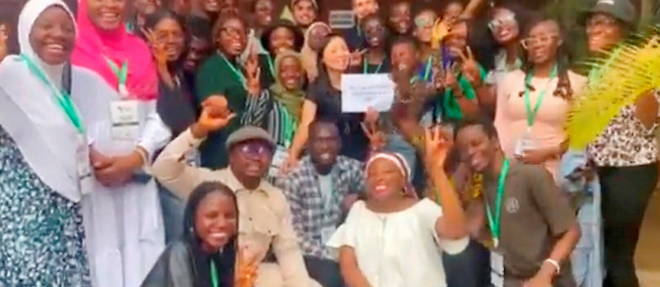From September 3 to 9, the African artificial intelligence community gathered in Ghana for a week of learning, research and exchange around artificial intelligence. This community, which has chosen the name Indaba (“gathering”, in Zulu), is increasingly alive. A graduate of the University of Witwatersrand, in South Africa, which she completed with a master’s degree at the Japanese University of Tohoku, Pelonomi Moiloa had the idea of Lelapa AI, an artificial intelligence model which aims to promote the 2,000 languages of the African continent. His start-up – whose name means “house” in the South African languages Sotho and Tswana – wants to ultimately create an alternative to ChatGPT. For her part, Senegalese researcher Awa Bousso Dramé relies on artificial intelligence to use satellite data to monitor coastal erosion in West Africa. She is passionate about geomorphology. President of the NGO The Africa I Know, her compatriot Adji Bousso Dieng directs Vertaix, a laboratory at Princeton University, which is interested, among other subjects, in the contributions of AI to biology. Distinguished in particular by the Africa App Challenge, organized by France 24 and RFI, which screened 800 candidates, Rabeb Fersi uses artificial intelligence to develop more precise agriculture. The creator of the start-up iFarming sees it as a decisive asset in times of water shortage. For their part, the two Tunisian researchers Rihab Gorsane and Omayma Mahjoub joined forces with South African scientists Ruan de Kock, Siddarth Singh and Arnu Pretorius to publish a research article in artificial intelligence, particularly noticed at the end of 2022 in the United States. Rihaba Gorsane works in particular for InstaDeep, a start-up created by the Franco-Tunisian polytechnician Karim Beguir, who played a key role in the establishment of the Indaba network §
What does not kill you makes you stronger. This is the lesson that Huawei sent to the whole world with the release of its Mate 60 Pro. Indeed, the Shenzhen company created in 1987 has developed a chip engraved at 6 nanometers to run its latest smartphone. We have come a long way. Flashback. Until five years ago, Huawei was, alternately with Samsung and Apple, the largest seller of smartphones in the world. The world’s leading patent filer, he was leading the way in 5G, radio loops and artificial intelligence. For the Americans, it was a sort of “Sputnik moment,” comparable to that of 1957, when they discovered that the Soviets had taken the lead in space conquest. Washington then put pressure on Chinese subcontractors, as well as Western operators, to remove Huawei from their core network. The latter has therefore managed to fend for itself and, while Beijing has just banned its employees from equipping themselves with Apple smartphones, promises to be a centerpiece of an increasingly head-on Sino-American technological war. .

